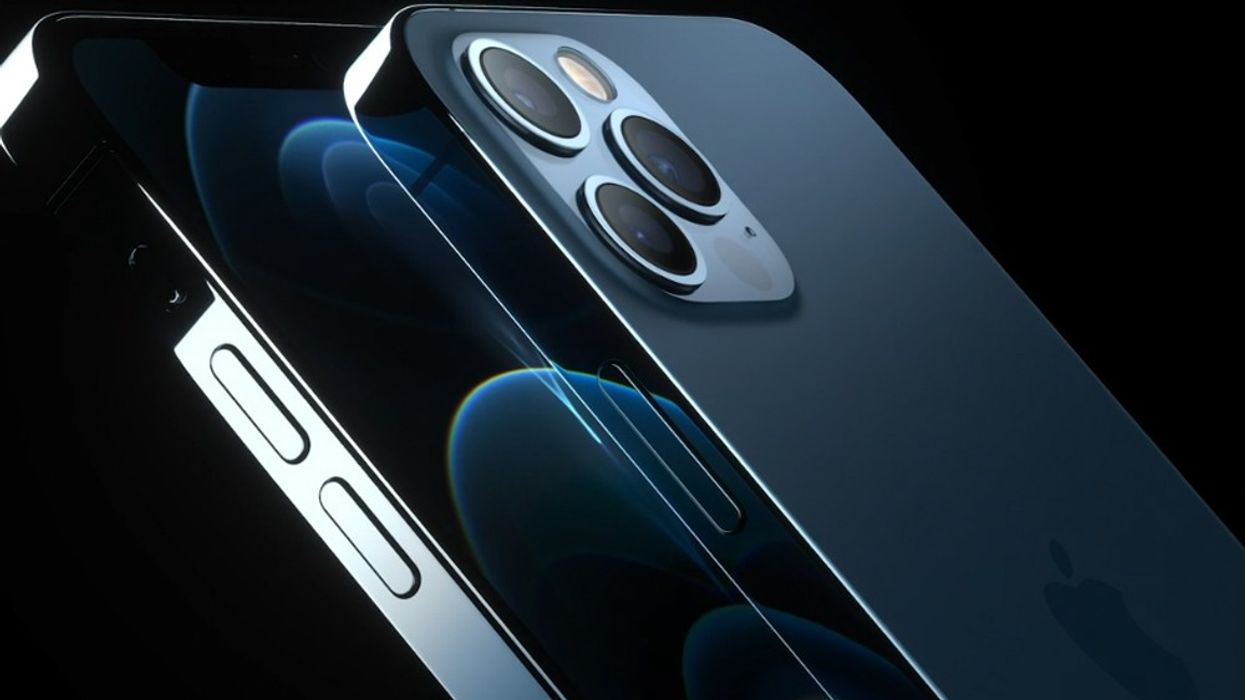Here's What the iPhone 12 Means for Creators
Apple has released its latest iPhone models. Here's what creators should know about the video capabilities of its new flagship iPhone 12 Pro Max.

The first generation iPhone was released over 13 years ago on June 29, 2007. Back then, it was revolutionary in terms of its pleasing aesthetics and functionality, but the iOS didn't record video, nor did it have GPS or access to third-party apps. A year later, Android hit the market, and the two operating systems have been vying for the attention of consumers ever since.
Today, Apple has released a range of new smartphones—iPhone 12, iPhone Mini, iPhone 12 Max, and iPhone 12 Pro Max—packed with new features that are sure to appease mobile creators.
Although some have been part of the Android ecosystem for some time, when it comes to third-party apps for filmmakers, developers can be slow to adopt to Android. In fact, there are dozens out there only available for iOS, leaving creators to find an alternative or go without.
Let's see how the new flagship iPhone compares to the three more popular Android phones on the market today, the Google Pixel 5, OnePlus 8 Pro, and Samsung Galaxy Note 20 Ultra.

Apple iPhone 12 Pro Max
- Apple A14 Bionic
- Wide rear camera: 12MP, f/1.6, 26mm, 1.7µm, dual pixel
- Telephoto rear camera: 12MP, f/2.2, 65mm, 2.5x Zoom, OIS
- Ultrawide rear camera: 12MP, f/2.2, 13mm
- Front camera: 12MP, f/2.2, 23mm
- Video: 4K UHD at 24/30/60fps, 1080p at 30/60/120/240fps, 720p at 30fps
- Front video: 4K UHD at 24/30/60fps, 1080p at 30/60/120fps
- Storage up to 512GB
- 6GB of RAM
- No memory card slot
- 120Hz refresh rate
Google Pixel 5
- Qualcomm Snapdragon 765G
- Wide camera: 12.2MP, f/1.7, 27mm, 1.4µm, dual pixel PDAF, OIS
- Ultra wide camera: 16MP, f/2.2, 107˚, 1.0µm
- Front camera: 8 MP, f/2.0, 24mm, 1/4.0", 1.12µm
- Video: 4K UHD at 30/60fps, 1080p at 30/60/120/240fps, gyro-EIS
- Front camera video: 1080p at 30fps
- Storage up to 128GB
- 8GB RAM
- No memory card slot
- 90Hz refresh rate
OnePlus 8 Pro
- Qualcomm SM8250 Snapdragon 865
- Wide camera 48MP, f/1.8, 25mm, 1.12µm, omnidirectional PDAF, Laser AF, OIS
- Telephoto camera: 8MP, f/2.4, 1/1.0µm, PDAF, OIS, 3x optical zoom
- Ultrawide camera: 48MP, f/2.2, 14mm, 116˚, 0.8µm, PDAF
- Fourth rear camera: 5MP, f/2.4
- Front camera: 16MP, f/2.5, 1.0µm
- Video: 4K UHD at 30/60fps, 1080p at 30/60/240fps
- Front video: 1080p at 30fps
- Up to Storage 256GB
- Up to 12GB RAM
- No memory card slot
- 120Hz refresh rate
Samsung Galaxy Note 20 Ultra
- Qualcomm SM8250 Snapdragon 865
- Main rear camera: 108MP, f/1.8, 26mm (wide), 0.8µm, PDAF, Laser AF, OIS
- Second rear camera: 12MP, f/3.0, 120mm (periscope telephoto), 1.0µm, PDAF, OIS, 5x zoom, 50x hybrid zoom
- Third rear camera: 12MP, f/2.2, 120˚, 13mm (ultrawide), 1.4µm
- Front camera: 10 MP, f/2.2, 26mm (wide), 1.22µm, autofocus
- Video: 8K UHD at 24fps, 4K at 30/60fps, 1080p at 30/60/240fps, 720p at 960fps,
- Front video: 4K at 30/60fps, 1080p at 30fps
- Storage up to 512GB
- 12GB RAM
- microSDXC memory card slot
- 120Hz refresh rate
You essentially can't go wrong with any option, from a pure spec standpoint. You're going to get quality images, and with the Samsung Galaxy Note 20, you're getting a staggering 108 megapixels. Do you need all those megapixels when it comes to video? Not at all. The Sony a7S III is a 12.1MP camera.
It all boils down to the quality of the sensor and how the photosites capture light and translate that information into a group of pixels we see on a screen. And that's where the new iPhones might edge out the competition.
The new iPhones are going to produce great images, and when paired with filmmaking tools like FiLMiC Pro (also available on Android), it becomes a versatile video capture device that can fit into your pocket. And that's what's remarkable about today's smartphones. You can start creating without spending more money on a mirrorless or dedicated cinema camera.
When Sony released the Xperia 1 II, they went all-in on the concept, combining Alpha camera autofocus with Zeiss optics. When smartphone images can immerse you in story, re: Tangerine, re: Mythic Quest, it opens up the democratization of the filmmaking even further.

With the iPhone 12 Pro models, Apple added new technology besides 5G. That includes Apple ProRAW for stills and a LIDAR sensor, which is found on the iPad Pro and is used for augmented reality (AR). According to Apple, Apple ProRAW will be coming later this year, and it will give users full creative control over color, detail, and dynamic range natively on iPhone or with other professional photo editing apps. The new LiDAR scanner will improve autofocus under low light conditions as it measures the light distance and uses pixel depth information of a scene. It also enables Night Mode portrait photos, a mode now included on each of the cameras.
Other features include a night mode time-lapse, extended dynamic range for video up to 30fps, and cinematic video stabilization when recording in 4K, 1080p, and 720p. We'll have to see how the image stabilization works when combining it with a stabilizer like the DJI OM4, but it's interesting to see what's changed since Apple mentioned they improved the X/Y shift of the sensor.

Another change is the addition of 10-bit HDR video recording with Dolby Vision up to 60fps. Better yet, Apple is going to allow you to edit images directly in-camera. Even cinematographer Emmanuel Lubezski was part of the Apple event this year, shooting a promo to show off the new feature. You can watch it by scrolling down to the middle of this page.
We're looking forward to seeing what these new cameras can do. But what do you think of some of the new tech? Let us know in the comments below.














